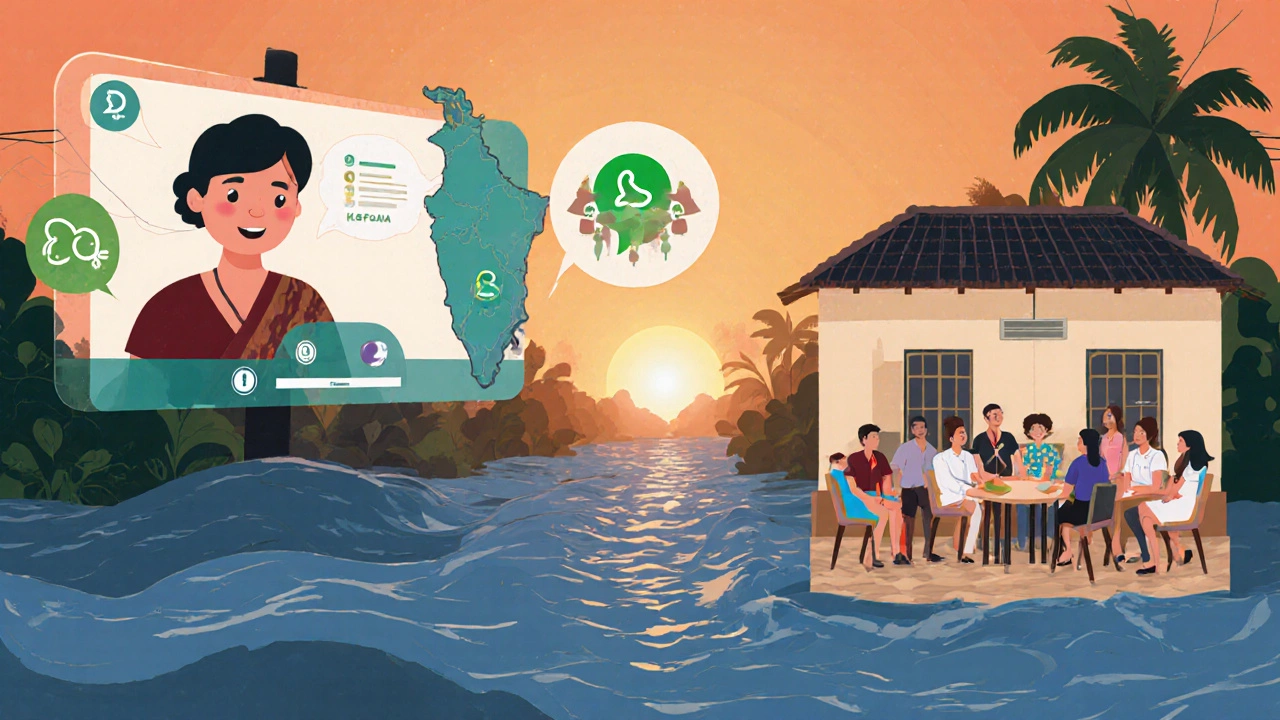Virtual Volunteering Impact Calculator
Your Estimated Impact
Benefits of Virtual Volunteering
- Flexibility: Volunteer anytime, anywhere with internet access
- Global Reach: Connect with causes worldwide
- Skills-Based Matching: Match your expertise with organizational needs
- No Travel Required: Save time and costs on commuting
- Measurable Impact: Track your contributions with clear metrics
When you hear virtual volunteering is a type of volunteer work carried out online, allowing people to contribute skills and time without being physically present, you might wonder if it really counts. The good news? It absolutely can, but the experience varies based on expectations, tools, and the cause you choose.
Key Takeaways
- Virtual volunteering saves commute time and expands opportunities across borders.
- Impact can be tracked, but visibility often depends on the organization’s reporting.
- Choosing the right platform and clear role description is crucial for satisfaction.
- Blend virtual tasks with occasional in‑person events to boost community connection.
- Skill‑based projects deliver the highest ROI for both volunteers and nonprofits.
Understanding Virtual Volunteering
At its core, virtual volunteering connects volunteers to nonprofit projects through digital channels such as video calls, collaborative docs, or dedicated platforms. Unlike traditional volunteering, there’s no need to travel to a physical site, which opens doors for people with mobility issues, tight schedules, or those living far from major cities.
Typical tasks include content creation, social‑media management, data analysis, tutoring via video chat, and even remote mentoring. The common thread is that the volunteer delivers value without ever stepping foot in a office or shelter.
Who Benefits Most?
Remote volunteers are individuals who contribute from home or any location with internet access often include students, retirees, and professionals juggling busy careers. For them, the flexibility to log in for 30 minutes instead of a full day makes a huge difference.
On the other side, nonprofit organizations are mission‑driven groups that rely on donated time and expertise to achieve social goals can tap into a global talent pool, pulling in specialized skills that might be scarce locally.
When the match is right-say a data‑savvy graduate helping a health charity clean up its donor database-the impact can be measured in hours saved, errors reduced, and funds redirected to services.

Virtual vs. In‑Person Volunteering: A Quick Comparison
| Aspect | Virtual Volunteering | In‑Person Volunteering |
|---|---|---|
| Time Flexibility | High - work whenever you have internet | Low - fixed shifts or events |
| Skill Matching | Often skill‑based and specialized | May be more general or manual |
| Impact Visibility | Depends on reporting tools | Immediate, tangible outcomes |
| Training Needs | Online onboarding; self‑paced | Hands‑on training; often in‑person |
| Community Connection | Can feel isolated; needs virtual meet‑ups | Strong social bonds formed on site |
The table shows that virtual volunteering shines in flexibility and skill leverage, while in‑person work still wins on community bonding and visible outcomes. Your choice should align with what you value most.
Finding the Right Platform
Several digital platforms host listings of remote volunteer opportunities and facilitate communication between volunteers and organizations have emerged in recent years. Popular options include:
- VolunteerMatch - broad catalog, easy filtering by skill.
- Idealist - focuses on social impact projects with clear impact metrics.
- UN Volunteers - offers large‑scale humanitarian tasks, often with training.
- Catchafire - connects professionals with skill‑based gigs for nonprofits.
Maximizing Your Impact
To ensure your time translates into real change, follow these practical steps:
- Define Your Goals: Are you looking to develop a new skill, expand your network, or simply give back? Knowing your motivation guides the type of project you pick.
- Read the Role Description Carefully: A well‑written brief will list expected deliverables, required tools, and how success is measured.
- Set Clear Communication Cadence: Agree on weekly check‑ins via Zoom or Slack to stay aligned and get feedback.
- Document Your Work: Keep a log of hours, tasks completed, and any measurable outcomes. This helps both you and the nonprofit showcase impact.
- Ask for Impact Data: Request reports on how your contribution affected the organization’s goals-e.g., “We raised $5,000 more after updating the donor database.”
- Blend In‑Person Interaction: If possible, attend a local event or meet‑up organized by the nonprofit. Face‑to‑face moments strengthen relationships.
Applying these habits turns a casual online stint into a meaningful partnership.

Common Pitfalls and How to Avoid Them
Even with the best intentions, virtual volunteers can hit snags:
- Unclear Expectations: If the task description lacks specifics, you may spend time on low‑value work. Always ask for a concrete brief before starting.
- Technical Glitches: Poor internet or mismatched software can stall progress. Test your tools early and have a backup plan.
- Feeling Disconnected: Remote work can feel lonely. Join the organization’s virtual coffee chats or community boards.
- Over‑Commitment: The ease of logging in can lead to taking on too many projects. Track your available hours and set realistic limits.
Addressing these issues early keeps the experience rewarding for both sides.
Stories That Show It Works
During the 2023 flood relief effort in Kerala, a group of virtual mentors provided online counseling and resource navigation to displaced families. Over 200 households reported quicker access to aid thanks to real‑time advice delivered via WhatsApp and Zoom.
In New Zealand, a retired engineer volunteered remotely with a local environmental NGO, developing a data‑visualization dashboard that highlighted water‑quality trends. The tool helped secure a $50,000 grant, showing how remote expertise can unlock funding.
These examples illustrate that, when aligned correctly, virtual contributions can lead to tangible outcomes.
Should You Dive In?
If you value flexibility, have a specific skill set, and are comfortable with digital collaboration, virtual volunteering is definitely worth it. It expands your impact radius, lets you fit service around a busy schedule, and often provides clear metrics you can add to your résumé.
However, if you crave hands‑on interaction or need to build deep community ties, consider mixing in occasional in‑person events. The blend gives you the best of both worlds.
Frequently Asked Questions
What kinds of tasks can I do as a virtual volunteer?
Tasks range from graphic design, writing, and social‑media management to data entry, translation, tutoring, and virtual mentorship. The key is that the work can be completed online with the tools you already have.
How do I know if my virtual volunteer work is making a difference?
Ask the organization for impact reports or specific metrics tied to your role. For example, a content‑creation volunteer might be shown how many page views their articles generated.
Do I need special equipment to volunteer online?
Usually a reliable computer, internet connection, and basic software (like a word processor, spreadsheet, or video‑call app) are enough. Some roles may require specific tools, which the nonprofit should provide or recommend.
Can virtual volunteering count toward professional development?
Absolutely. Many organizations issue certificates or letters detailing your contributions. You can list the experience on LinkedIn, your résumé, or in job interviews as evidence of initiative and skill application.
Is virtual volunteering safe for personal data?
Choose reputable platforms that use encrypted connections and have clear privacy policies. Avoid sharing sensitive personal details unless the nonprofit explicitly needs them for the role.





